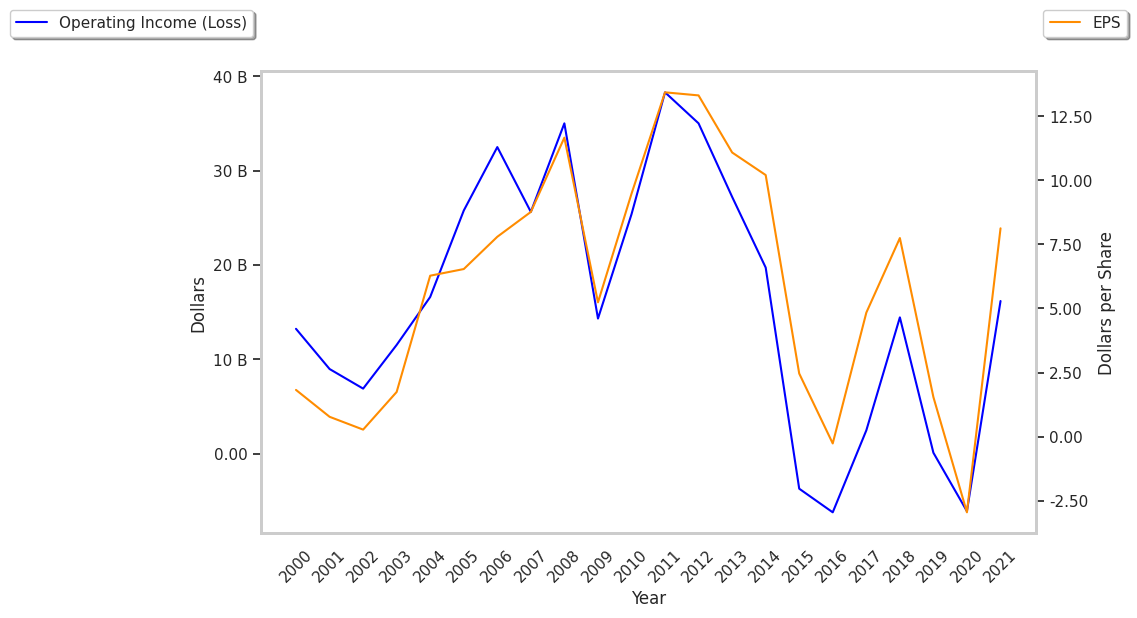Oil & Gas Integrated company Chevron is standing out today, surging to $154.82 and marking a 4.0% change. In comparison the S&P 500 moved only 1.0%. CVX is -8.12% below its average analyst target price of $168.5, which implies there is more upside for the stock.
As such, the average analyst rates it at buy. Over the last year, Chevron has underperfomed the S&P 500 by 30.1%, moving 0.8%.
Chevron Corporation, through its subsidiaries, engages in the integrated energy and chemicals operations in the United States and internationally. The company is classified within the energy sector. The stock prices of energy companies are highly correlated with geopolitics: economic crisis, war, commodity prices, and politics all have an effect on the industry. For this reason, energy companies tend to have high volatility -— meaning large and frequent price swings. As global energy supplies shift towards renewables, we may see a reduced correlation between energy prices and geopolitical events.
Chevron's trailing 12 month P/E ratio is 15.3, based on its trailing EPS of $10.1. The company has a forward P/E ratio of 13.4 according to its forward EPS of $11.58 -- which is an estimate of what its earnings will look like in the next quarter.
The P/E ratio is the company's share price divided by its earnings per share. In other words, it represents how much investors are willing to spend for each dollar of the company's earnings (revenues minus the cost of goods sold, taxes, and overhead). As of the third quarter of 2024, the energy sector has an average P/E ratio of 13.62, and the average for the S&P 500 is 29.3.
CVX’s price to earnings ratio can be divided by its projected five-year growth rate, to give us the price to earnings, or PEG ratio. This allows us to put its earnings valuation in the context of its growth expectations which is useful because companies with low P/E ratios often have low growth, which means they actually do not present an attractive value.
When we perform the calculation for Chevron, we obtain a PEG ratio of 35.1, which indicates that the company is overvalued compared to its growth prospects. The weakness with PEG ratios is that they rely on expected growth estimates, which of course may not turn out as expected.
Chevron's financial viability can also be assessed through a review of its free cash flow trends. Free cash flow refers to the company's operating cash flows minus its capital expenditures, which are expenses related to the maintenance of fixed assets such as land, infrastructure, and equipment. Over the last four years, the trends have been as follows:
| Date Reported | Cash Flow from Operations ($ k) | Capital expenditures ($ k) | Free Cash Flow ($ k) | YoY Growth (%) |
|---|---|---|---|---|
| 2023 | 35,609,000 | 15,829,000 | 19,780,000 | -47.43 |
| 2022 | 49,602,000 | 11,974,000 | 37,628,000 | 78.07 |
| 2021 | 29,187,000 | 8,056,000 | 21,131,000 | 1176.8 |
| 2020 | 10,577,000 | 8,922,000 | 1,655,000 | -87.46 |
| 2019 | 27,314,000 | 14,116,000 | 13,198,000 | -21.56 |
| 2018 | 30,618,000 | 13,792,000 | 16,826,000 |
- Average free cash flow: $18.37 Billion
- Average free cash flown growth rate: 5.7 %
- Coefficient of variability (lower numbers indicating more stability): 0.0 %
With its positive cash flow, the company can not only re-invest in its business, it can offer regular returns to its equity investors in the form of dividends. Over the last 12 months, investors in CVX have received an annualized dividend yield of 4.2% on their capital.
Another valuation metric for analyzing a stock is its Price to Book (P/B) Ratio, which consists in its share price divided by its book value per share. The book value refers to the present liquidation value of the company, as if it sold all of its assets and paid off all debts.
Chevron has a P/B ratio of 1.78. This indicates that the market value of the company exceeds its book value by a factor of more than 1, but is still below the average P/B ratio of the Energy sector, which stood at 1.86 as of the third quarter of 2024.
With an average P/E ratio, an average P/B ratio, and generally positive cash flows with an upwards trend, we can conclude that Chevron is probably undervalued at current prices. The stock presents poor growth indicators because of its decent operating margins with a stable trend, and an inflated PEG ratio.



